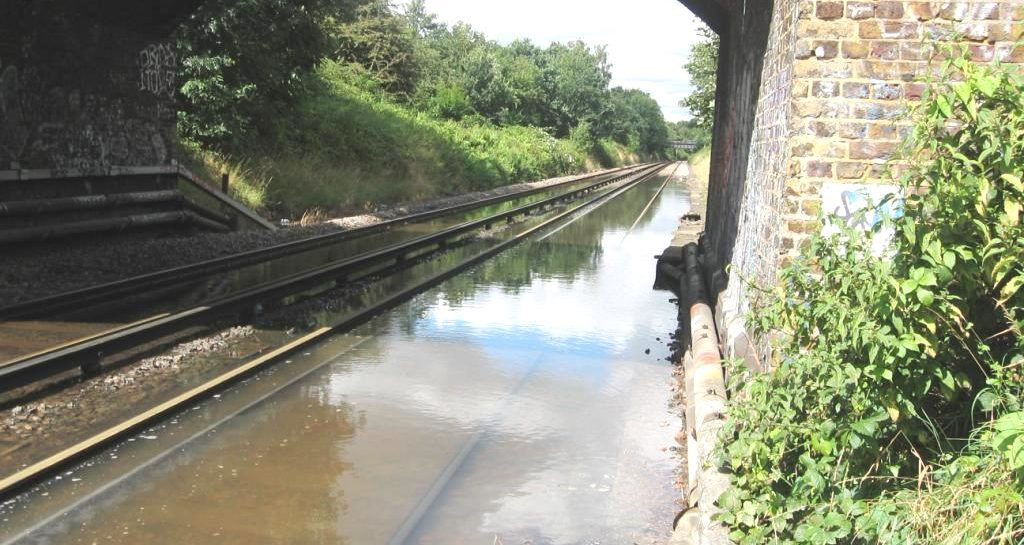Flooding
How flooding on the railway causes delays – and what we’re doing to reduce it
With the increased likelihood of extreme weather in Britain, flooding has become a frequent challenge for the railway network.
Why is the Railway Prone to Flooding?
There are several reasons why the railway can flood:
- Geographical Features: Many sections of the railway were built in cuttings and tunnels that are lower than the surrounding area. Other lines are on flat, low-lying land with limited drainage, which can be overwhelmed by heavy rain. For these reasons, many of our lines can flood, and this can cause serious problems for the railway. That’s why we’re always looking for ways to prevent floods happening in future.
- Urban development: Building on land near the railway can increase flooding because rain that previously soaked into the ground can run off the new hard surfaces and onto the tracks. To help prevent this, we review planning applications for developments near railway lines to make sure the drainage systems proposed are adequate.
How flooding affects the railway
When the railway floods, our engineers and contractors carry out repairs day and night so trains can safely run again as soon as possible, and there are lots of different things they have to check and repair.
When flood water rises above the rails, trains have to reduce their speed because debris may have moved onto the rails, or the ground underneath the track may have washed away. Flooding can cause a short circuit and cut the power if the track has a live conductor rail.
It’s not just during a flood that journeys can be disrupted but afterwards as well.

Trackside points and signalling equipment that rely on intricate wiring and power supplies can easily fail during flooding. They need to be replaced before trains can run on the track again.
When flood water drains away, it can wash away the ‘ballast’ – the bed of stones that supports the sleepers. This destabilises the track. To make the line safe again, this ballast must be relaid.
What happens when we get flooding on the railway?
- Heavy rain can overwhelm drainage systems, flooding tracks and slowing down trains.
- Water runs off hard ground onto the tracks, while ballast can wash away, de-stabilising the track.
- Heavy rain can also short-circuit power supplies for trains and cause signalling equipment to fail.
- To reduce the effects of flooding, we monitor weather forecasts and prepare flood maintenance teams for action.
- We install pumping stations in areas prone to flooding and deploy flood defences to protect the track.
- We keep drainage clear of blockages from vegetation, silt and debris and install new tracks and lineside equipment at higher than ground levels to keep them clear of water.
What we’re doing to reduce the effects of flooding and prevent delays
- Weather monitoring: We continually monitor the weather. As soon as we receive a flood warning from the Environment Agency and Flood Forecasting Centre, we send people and equipment to at-risk areas so we’re in position to act quickly.
- Flood defence systems: We deploy flood defence systems, including barriers with a membrane that seals to prevent water getting through, and inflatable barriers filled with water.
- Drainage maintenance: Branches, leaves and debris in ditches and drainage systems prevent water runoff. We clear these out both on and near the track.
- Pumping stations: Thanks to our ongoing project to build pumping stations in flood-prone locations, we have the resources in place to enable us to quickly pump flood water away when needed.
- Engineering works: As lines are renewed in flood prone areas, we install the tracks and signalling equipment at a higher level so it’s less likely they’ll be flooded.